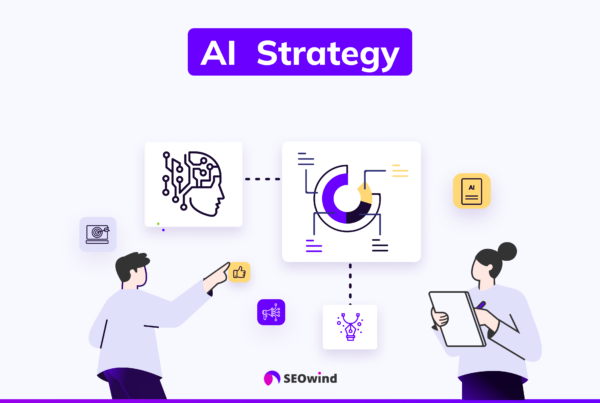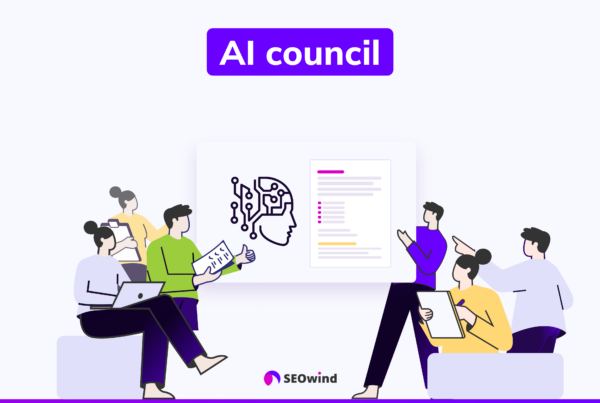For businesses to succeed, they must have a strong online presence. This means being easily found online and interacting with customers through digital channels. In this comprehensive guide, we will uncover various types of digital marketing that marketers use to drive results and foster lasting relationships with their audiences. So whether you are a novice or an experienced digital marketer, buckle up as we explore everything from Content Marketing to Instant Message Marketing.
What is Digital Marketing?
Digital marketing encompasses all marketing efforts utilizing the internet to connect with audiences, promote products or services, and ultimately drive sales. As technology advances rapidly and consumer behavior shifts towards online activities, effective digital marketing strategy has become indispensable to any business.
Numerous digital marketing efforts are designed to target different segments of consumers based on their unique preferences and behaviors. Understanding these various types allows marketers to allocate resources effectively and create tailored campaigns that yield desirable outcomes.
As you continue reading through this guide, remember your business goals and consider which types of digital marketing would serve them best. Remember that adapting your strategies as needed ensures maximizing your return on investment (ROI) and staying ahead of your competition in today’s ever-evolving world.
Types of Digital Marketing
There are numerous types of digital marketing methodologies that businesses can utilize to enhance their online presence, reach out to prospective customers, and drive revenue. In this section, we will be delving deep into a comprehensive overview of the different types of digital marketing.
- Content Marketing: Involves creating and sharing valuable content such as blog posts, infographics, podcasts, and videos, among others, to attract and engage target audiences. This method fosters trust and credibility while establishing your brand as an industry expert.
- Search Engine Marketing: The process by which websites optimize their content and structure to improve visibility on search engine results pages (SERPs) for specific keywords or phrases.
- Pay Per Click (PPC): An online advertising model wherein companies pay a fee each time one of their ads is clicked. Advertisers bid on relevant keywords to display their ads in search engine-sponsored spaces or other websites.
- Social Media Marketing (SMM): Involves using social media platforms like Facebook, Twitter, LinkedIn, or Instagram to connect with potential customers by sharing engaging posts and building solid follower bases.
- Email Marketing: A highly effective digital marketing channel that sends targeted emails with informative content to prospects or existing customers to nurture relationships and promote products or services.
- Influencer Marketing: Involves partnering with famous individuals within your niche (influencers) who endorse your brand/product/services through content on their channels; allowing you access to their audience
- Video Marketing: Incorporates video content on platforms like YouTube or Vimeo as part of your marketing strategy, helping create awareness, demonstrate how-to concepts, and build trust with your audience.
- Audio Marketing: Utilizes audio platforms like podcasts, music streaming services, or radio channels to communicate your brand’s message or promote products/services.
- Viral Marketing: This relies on creating shareable content that appeals to the emotions of internet users, so they willingly spread it through their social networks. A successful viral campaign can lead to significant exposure for minimal investment.
- Mobile Marketing: Targets mobile device users through ads on apps, text messages (SMS), in-game advertisements, or geolocation-based promotions, among others.
- Native Advertising: Involves running sponsored content in contextually relevant settings, e.g., promoted articles within news websites or branded videos within video streaming platforms.
- Online Public Relations (PR) Marketing: Enhances online reputation by leveraging various PR tactics such as press releases, media mentions, influencer outreach, and guest blogging opportunities.
- Affiliate Marketing – Affiliates direct traffic toward your product or service offering in exchange for a commission based on set goals achieved, e.g., leads or purchases made by referred visitors.
- Marketing Automation: Streamlines repetitive marketing tasks utilizing automation software or tools for email scheduling, social media posting, or ad campaign analysis.
- Instant Message Marketing: It leverages communication platforms like Facebook Messenger, WhatsApp, or WeChat to directly engage with clients via personalized messaging campaigns such as promotion alerts or customer service inquiries.
Understanding the multiple forms of digital marketing channels equips businesses with the necessary knowledge to determine which strategies align best with their goals and target audiences while maximizing ROI effectively.
When and How to Use Different Types of Digital Marketing

Employing the correct types of digital marketing can significantly impact your business’s success. Knowing when and how to use each form will help you reach your target audience effectively, generate leads, and ultimately grow your sales.
This section explores several scenarios on when and how you can implement various digital marketing types effectively.
Content Marketing for Brand Awareness & Thought Leadership
Content marketing should be at the forefront of your strategy when you aim to build brand awareness or establish your business as an industry thought leader. Creating high-quality blogs, articles, infographics, e-books, or whitepapers allows you to offer valuable information that appeals to your target audience. The key components of a successful content marketing plan include consistency in producing relevant content tailored to attract potential customers.
Search Engine Optimization (SEO) for Organic Traffic Growth
If organic traffic growth is a priority for your business, implementing search engine optimization techniques becomes vital. To enhance visibility in search engines like Google and Bing, a winning SEO strategy should involve keyword research that identifies the terms users search for related to your niche or product offerings. Afterward, optimize your web pages by incorporating these keywords into strategic placements through on-page optimization practices.
Pay-Per-Click Advertising (PPC) for Immediate Results
Pay-per-click advertising is a reliable solution for businesses aiming at quick results with targeted campaigns pushing specific products or services. Using platforms paid search advertising like Google Ads or Bing Ads coupled with well-researched keywords relevant to a particular target audience – PPC ads drive website traffic from users who opt-in upon clicking advertisements featured within search engine result pages.
Social Media Marketing (SMM) for Audience Engagement & Nurturing Prospects
To foster genuine connections with prospects while fostering customer relationships – incorporate social media marketing tactics deployed across popular platforms like Facebook, Instagram, Twitter, and LinkedIn – to mention a few. The benefits of utilizing SMM include:
- Establishing an open line of communication with your audience.
- Showcasing the unique personality behind your brand.
- Sharing relevant content to keep followers educated or entertained while encouraging user-generated content in return.
Email Marketing for Customer Retention & Upselling Opportunities
To enhance customer retention rates or capitalize on upselling opportunities – invest resources into email marketing initiatives by segmenting subscribers based on their interests, previous purchases, or behaviors. Use promotional offers and personalized recommendations that cater to individual preferences to nurture existing relationships and maximize revenue streams from evolving needs.
Ultimately, the optimal combination of different types of digital marketing strategies will vary according to industry dynamics and target markets at play; however, mastering these techniques – be it individually or tailored towards a cohesive, integrated approach – ensures businesses get ahead while consistently outperforming against competitors in today’s fast-paced digital world.
1. Content Marketing
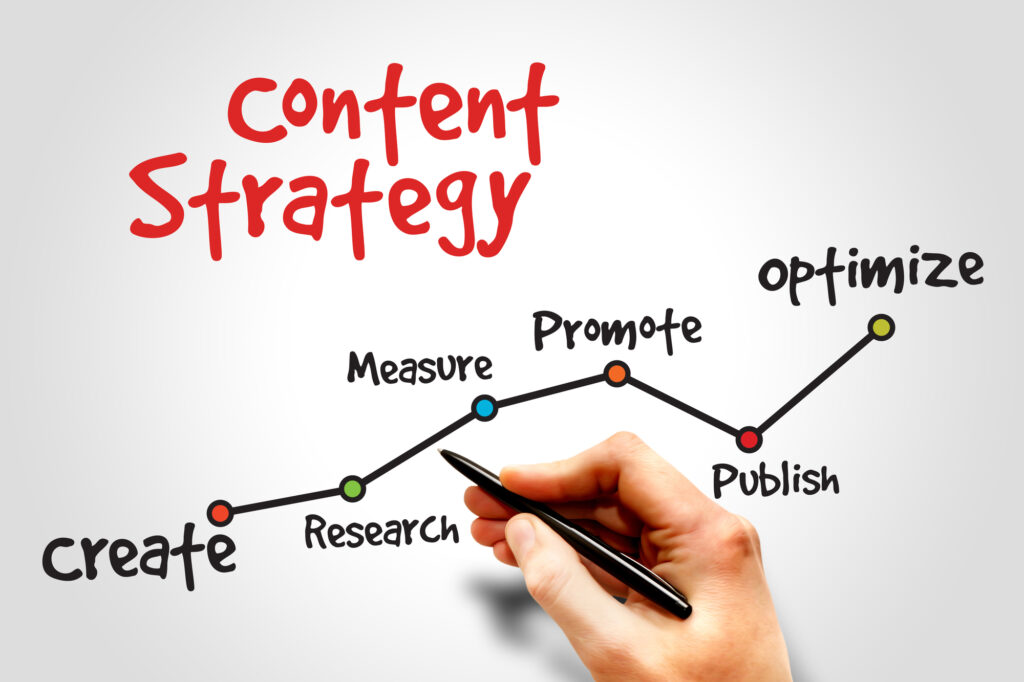
Content marketing is a strategic approach to digital marketing that focuses on creating, publishing, and distributing valuable, relevant, and consistent content to attract and engage a clearly-defined audience. By providing helpful information to potential customers, content marketers aim to build trust and ultimately encourage them to purchase. The six primary forms of digital marketing outlined above can all be incorporated into content marketing strategies. Let’s explore the different types of content marketing channels available.
Types of Content Marketing
Various forms of communication are used in content marketing campaigns, depending on the target audience’s preferences and the campaign’s objectives. Some common types of content marketing include:
- Blogs: Regularly published articles covering industry news, tips, or insights provide value for your target audience and increase website traffic.
- E-books: Comprehensive guides addressing essential topics in your niche showcase expertise while allowing readers to learn more about your business.
- Infographics: Visually engaging representations of complex data or ideas facilitate comprehension, making it easier for users to digest information.
- Podcasts: Audio-based programming offers convenience by allowing listeners to consume content during commutes or other low-focus activities.
- Videos: Highly versatile, videos may range from product demonstrations to educational webinars or even behind-the-scenes sneak peeks at company culture.
- Case studies: Sharing stories about how businesses solved specific problems with your products illustrates real-world examples backed by identifiable outcomes.
Incorporating a diverse array into a content marketing strategy increases reach across various audience segments while maintaining engagement among existing followers.
Benefits of Content Marketing for Digital Marketing Strategy
Effective content marketing offers several advantages over traditional marketing and advertising techniques:
- Increased brand awareness: High-quality content reflects positively on your brand image and attracts attention from those interested in what you say.
- Educates prospective customers: Informational resources help potential buyers understand their needs better and establish credibility in your expertise.
- Better search engine rankings: Consistently publishing valuable content related to specific digital marketing types can attract backlinks from other websites, thereby boosting SEO performance and driving organic traffic.
- Customer loyalty: Frequent engagement through insightful content keeps audiences coming back for more, resulting in long-term retention of current clients.
- Higher conversion rates: By establishing trust and showcasing competence, content marketing increases the likelihood that audiences will ultimately choose your products or services when purchasing.
Key Components of Content Marketing
For a successful content marketing campaign, businesses need to consider several key components:
- Clear goals and objectives: Define what you want to achieve with your content – increasing brand awareness, generating leads, or educating customers.
- Target audience personas: Identify specific audience segments based on factors like demographics, preferences, and pain points to create relevant content addressing their unique needs.
- Consistent production schedule: Maintain a regular posting cadence to keep users engaged while signaling search engines that your website is consistently updated with fresh content.
- Diverse formats & topics: Experiment with different digital marketing types and subjects to maintain interest and cater to various learning styles among consumers.
- Promotion strategies: Leverage social media platforms, email newsletters, SEO tactics, and influencer partnerships to ensure your target market has ample opportunity to discover your content offerings.
- Continuous monitoring & improvement: Track metrics related to user behavior (time spent on the page), engagement (likes/shares), and conversions (leads generated).
2. Search Engine Marketing

Search Engine Optimization, or SEO, is one of the most crucial types of digital marketing that focuses on improving a website’s visibility in organic search engine results pages (SERPs). Employing various strategies and techniques, it aims to increase a website’s ranking and generate more traffic from online searchers. SEO encompasses multiple aspects such as keyword research, on-page optimization, off-page optimization, technical SEO, and analytics and reporting.
Keyword Research
Keyword research is the foundational step in any successful SEO campaign. It involves identifying and analyzing the keywords relevant to your niche, target audience, products, or services. This process helps businesses understand the following:
- What terms their potential customers are using when searching for products or services similar to theirs
- The competitiveness of these terms in search engine rankings
- Opportunities for targeting long-tail keywords with lower competition but high conversion potential
Numerous tools are available to conduct keyword research, like Google Keyword Planner or SEMRush. Utilizing these tools allows you to determine which keywords offer the best balance between search volume and competition while pinpointing areas that could be improved upon within your existing content strategy.
On-Page Optimization
On-page optimization refers to all the tweaks and improvements made directly on a website’s pages to enhance its search engine visibility. Key components include:
- Optimizing title tags: Crafting concise yet descriptive titles, including targeted keywords.
- Ensuring header tags (H1-H6) hierarchy: Headers should be appropriately structured to give users a clear understanding of your content’s organization.
- Maximizing meta descriptions: Crafting compelling 150-character descriptions that effectively summarize a page’s content.
- URL structure: Make sure URLs are short, descriptive, and include relevant keywords.
- Image optimization: Using alt-tags containing relevant keywords for images and compressing image files without sacrificing quality.
Strategic placement of well-researched keywords throughout a webpage is essential for search engines to understand the intent and relevance of your content.
Off-Page Optimization
Off-page optimization relates to the activities that occur outside of your website but still impact its search engine rankings. Some examples include:
- Link-building: Acquiring high-quality, relevant backlinks from authoritative websites to boost credibility and drive referral traffic.
- Social media marketing: Sharing posts, articles, and images on social platforms to build brand awareness and generate additional backlinks.
- Influencer outreach: Collaborating with influencers within your niche who could benefit from sharing or linking to your content.
- Guest blogging: Writing articles on other websites in exchange for backlinks pointing toward your site.
These techniques help improve your website’s perceived trustworthiness and authority while ensuring increased visibility in SERPs.
Technical SEO
Technical SEO encompasses all the technical aspects of a website that search engines consider when crawling, indexing, and ranking web pages. Effective technical SEO involves:
- Ensuring faster page load times by optimizing code, compressing images, and using caching mechanisms
- Implementing proper mobile-friendly design and responsive layouts
- Ensuring quality user experience through improved navigation structures
- Utilizing schema markup (structured data) to provide more precise context to search engines about each page’s content
- Avoiding duplicate content issues by using canonical tags wisely
Addressing these critical areas ensures search engines can easily crawl and index each of your site’s pages without encountering any roadblocks.
Analytics and Reporting
Data provide insights into the performance of a website, helping to identify areas of improvement and growth. Some essential SEO metrics to monitor include organic search traffic, click-through rate, bounce rate, conversion rate, keyword rankings, and backlinks.
3. Pay Per Click (PPC)
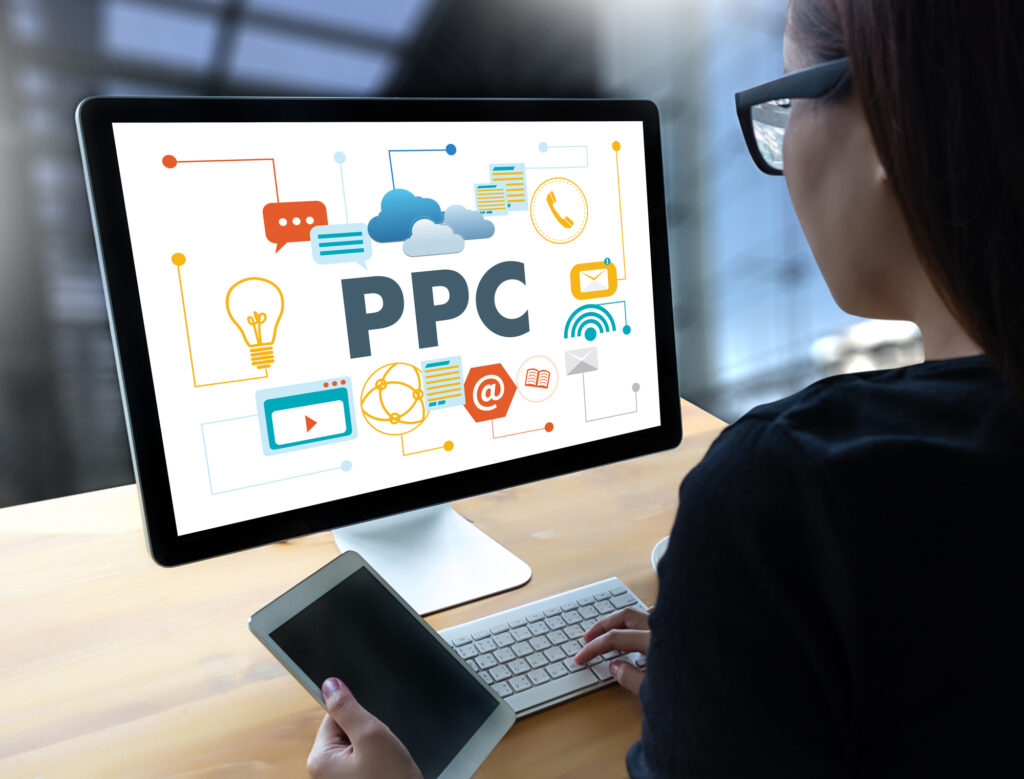
Pay Per Click (PPC) is one of the most popular types of digital marketing, which involves paying a fee each time an advertisement gets clicked by online users. It enables businesses to buy traffic rather than earn it organically and offers quick results in generating leads and sales. Paid advertising can be employed on search engines, social media platforms, and websites.
How PPC Works
In its simplest form, PPC operates through a bidding system that allows marketers to target keywords relevant to their products or services with paid ads. When users search for those keywords, the ad appears at the top or bottom of the search engine results page (SERP). Each time someone clicks on the advertisement, the advertiser pays a fee determined by competitive bids against rival advertisers.
- Keyword Research: Invest substantial time and resources into researching relevant keywords to target within your campaigns. This may involve exploring keyword ideas, analyzing competitors’ strategies, and selecting high-intent phrases.
- Ad Creation: Develop compelling advertisements with solid call-to-actions (CTAs), attention-grabbing headlines, URL structures specific to your brand or landing pages, and visuals.
- Campaign Management: Monitor your campaign’s performance regularly and optimize ads based on data-driven analysis. Assess factors such as cost-per-click (CPC), click-through rate (CTR), conversion rate, average ad position, return on investment (ROI), etc., ensuring that campaigns remain efficient and profitable.
Benefits of PPC
Amongst numerous reasons why many digital marketers rely on paid ads are:
- Measurable Results: One advantage of PPC is its precise measurability in evaluating campaign success using various metrics like CPCs, CTRs, conversion rates, etc.
- Quick Results: Organic SEO methods take months before producing significant outcomes, such as improved keyword rankings. On the contrary, paid advertisements deliver fast growth via increased website visitors upon launching campaigns without any delay or uncertainty.
- Targeted Marketing: PPC allows users to precisely target their audience through specific keyword targeting, location-based demographics, device preferences, and desired times of the day.
- Brand Awareness: High visibility in search results builds brand recognition, increasing the probability that potential customers connect with your company’s offerings long after they first encounter your ads.
Key Components of PPC
When crafting successful PPC campaigns, digital marketers typically emphasize three critical aspects:
- Effective Ad Copy: Tailoring ad messages to address users’ queries helps set businesses apart from competitors within crowded marketplaces while driving engagement rates up consistently. Engaging copy sparks curiosity amongst potential clients inclined towards exploring these brands further online until convinced about purchasing goods/services being advertised.
- Landing Page Optimization: Upon clicking ads, site visitors should find themselves landing on a page tailored to meet their expectations and provide valuable information about the related advertisement. A well-optimized landing page can significantly improve conversion rates by satisfying user intent and streamlining CTAs that lead to actual sales or sign-ups.
- Bid Strategies & Budget Management: Implementing strategic bidding tactics relevant to each campaign’s goals is vital for maximizing ad impressions and clicks without surpassing budgets unnecessarily – be it through manual cost optimization techniques or relying upon automated algorithms provided by advertising platforms available today (e.g., Google Ads).
4. Social Media Marketing (SMM)

Social media marketing, often abbreviated as SMM, revolves around using social media platforms to promote products or services. It involves creating engaging content suitable for each platform while fostering genuine interactions with customers and prospects. Effective digital marketing through SMM can propel brand awareness, drive website traffic, and even generate sales.
Types of Social Media Platforms
Several social media platforms cater to different forms of digital marketing by offering diverse user experiences and functionalities. Some popular platforms for building social media presence include:
- Facebook: With over 2 billion monthly active users, Facebook is an excellent platform to connect with a vast audience. Its features allow businesses to reach numerous consumers, from ads to organic posts.
- Instagram: Primarily a visual platform, Instagram is ideal for showcasing visually appealing content such as photos or videos and connecting with younger demographics.
- Twitter: This fast-paced microblogging site enables real-time engagements between brands and followers using short-form texts known as “tweets.”
- LinkedIn: LinkedIn focuses on professional networking and industry connections, making it an excellent platform for B2B marketing campaigns.
- Pinterest: By allowing users to curate virtual pinboards based on personal interests, Pinterest is the perfect setting for promoting products related to fashion, home décor, food, fitness, etc.
Benefits of Social Media Marketing
Among the many advantages offered by social media marketing are the following:
- Increased Brand Awareness: Consistently posting valuable content can help build brand recognition among your target audience.
- Enhanced Customer Engagement: Embracing different types of digital marketers allows you to communicate directly with customers while receiving instant feedback regarding your products or services.
- Cost-effective Strategy: Utilizing organic growth methods on social media requires little investment compared to traditional advertising expenses.
- Improved Search Engine Ranking: By integrating SEO tactics into your SMM strategy, your online presence may receive a boost on search engine result pages (SERPs).
- Increased Conversion Rates: Engaging with potential customers using digital marketing methods can help create an authentic connection, often growing conversions.
Key Components of Social Media Marketing
When using Social Media Marketing, keep this component in mind:
- Define Your Goals: Establish clear objectives aligning with your business goals.
- Identify Your Target Audience: Research and segment the audience you’re trying to reach so you can tailor content accordingly.
- Create Compelling Content: Craft thoughtful, relevant, and engaging content that applies to each platform’s specific characteristics.
- Choose the Right Platforms: Select platforms that best cater to your target audience and type of online marketing approach.
- Engage with Users: Promptly respond to comments or messages from users and foster genuine conversations as part of your SMM strategy.
- Track Metrics & Adjust Strategies Accordingly: Regularly evaluate key performance indicators (KPIs) such as engagement rates, impressions, clicks, etc., allowing data-driven adjustments to optimize future campaigns.
By carefully considering these components while strategizing SMM tactics, businesses can reap the benefits of various social media platforms and enhance their digital marketing success.
5. Email Marketing
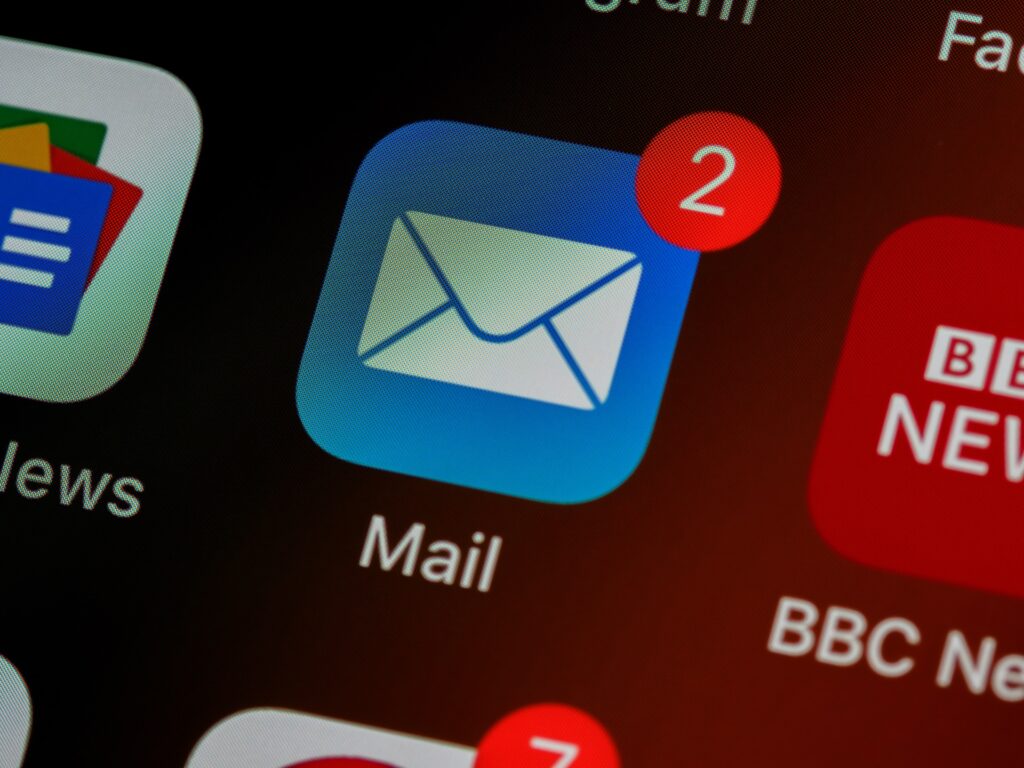
As one of the most effective types of digital marketing, email marketing is a vital channel for communicating with existing customers and nurturing potential leads. Businesses worldwide use this method to reach customers personally through their inboxes while avoiding cluttering social media feeds or requiring users to visit the company website.
Types of Email Marketing
Businesses incorporate several different types of email marketing strategies to achieve specific goals. Some common types include:
- Newsletters: Regularly scheduled emails that provide valuable content such as articles, deals, or events related to your industry or business.
- Promotional: These emails contain special offers, discounts, and other enticing incentives for your audience.
- Transaction Emails: Sent when users perform transactions like purchasing products online or signing up for an account; they typically offer confirmation receipts and follow-up information.
- Lead-Nurturing Campaigns: Designed to engage potential customers by providing educational resources tailored to their preferences over time.
- Re-engagement Campaigns: Targeted at inactive subscribers who have yet to engage with previous emails, these campaigns often feature irresistible promotions to garner renewed attention.
Benefits of Email Marketing
Email marketing presents numerous advantages for businesses and helps contribute positively toward achieving various objectives:
- Enhanced Customer Relationships: By regularly providing value-added content, you build trust with recipients, strengthening relationships over time.
- Improved Conversion Rates: Promotions sent via email have higher conversion rates than other channels due to audience targeting capabilities allowing personalization.
- High ROI: According to a study by Litmus, every dollar spent on email marketing sees an average return on investment (ROI) of 42 dollars [^litmus^], making it a cost-effective choice for companies on limited budgets.
- Easy Integration With Other Channels: Email can be seamlessly integrated alongside other forms of digital marketing like content marketing or social media efforts.
Key Components of Email Marketing
To make the most out of email marketing efforts, pay close attention to these fundamental aspects:
- Effective Subject Lines: A compelling and clear subject line is crucial for enhancing the open rates of your emails.
- Personalization: Address recipients by name or include content tailored to their preferences, leading to a more enjoyable user experience.
- Mobile-Friendly Designs: Ensure your emails are legible on all devices, as many users access their inboxes through smartphones or tablets.
- Segmentation: Separate subscribers into smaller lists based on their demographics or interests to deliver relevant content targeting specific audience groups.
- Strong Calls-to-Action (CTAs): CTAs prompt readers to take desired actions, such as visiting a webpage or completing a purchase, using directives and visible buttons throughout the email.
By implementing thoughtful strategies incorporating each type of email marketing campaign and considering their unique benefits, businesses can strengthen customer relationships while driving profitable results.
6. Influencer Marketing

Influencer marketing is a type of digital marketing that centers around partnering with individuals who hold influence over their audience, usually through social media platforms or blogs. These influencers are personalities with extensive knowledge, authority, and trust within their respective niches. Here’s how it works:
- Brands identify influencers relevant to their industry or target audience.
- The influencer promotes the brand’s products or services to their followers.
- In return, the influencer receives compensation in various forms like monetary rewards, discounts, freebies, or exclusive access to events.
To make the most of this strategy, brands must collaborate with influencers who share similar values and resonate with their target demographic. Some benefits of an influencer marketing campaign include increased brand awareness, enhanced credibility through association with trusted figures, higher customer engagement rates, improved website traffic generation potential, and a greater likelihood of sales conversions.
7. Video Marketing

As the world becomes increasingly digitized, it’s no surprise that video marketing has emerged as one of the dominant forms of digital marketing. Engaging and versatile, this content medium is both informative and entertaining. This section explores various aspects of video marketing, including its benefits, applications, and key components.
Benefits of Video Marketing
Video marketing offers numerous advantages for businesses looking to diversify their online presence. Some main benefits include:
- Increased engagement: The visual and auditory nature of videos makes them inherently more engaging than text-based content. According to a study conducted by HubSpot, incorporating videos in your marketing strategy can increase click-through rates by 96%.
- Enhanced SEO: Adding quality video content can improve organic search traffic and boost search engine rankings.
- Improved information retention: People typically retain 95% of a message when viewed in a video compared to just 10% when seen through text — making it easier for brands to convey complex concepts effectively.
- Higher emotional impact: Videos possess an unrivaled ability to elicit emotion from viewers – this emotional connection increases trust in your brand and drives sales.
- Reaching wider audiences: Videos allow you to connect with your target audience across multiple platforms such as social channels, blogs, websites, and email campaigns.
Types of Video Marketing
There are several different types of digital marketing videos that you can create depending on your objectives:
- Explainer videos: Simplify complicated concepts or products
- Product reviews/demos: Showcase product features or services
- Tutorials/How-to guides: Solve problems or teach new skills
- Webinars: Share expertise or host interactive discussions
- Testimonials/Customer stories: Build trust through authentic experiences
- Social media short-form content (e.g., Instagram Stories): Engage audiences in quick bursts
Key Components of Video Marketing
To ensure the success of your video marketing efforts, consider the following essential components:
- Strategic planning: Determine your target audience, set clear objectives and goals, and develop a well-structured content plan.
- High-quality production: Invest in quality equipment or services for crisp visuals and clear audio – poor production value could hinder your message’s effectiveness.
- Captivating storytelling: Weave a meaningful narrative that appeals to the viewer’s emotions while serving the core purpose of the video.
- Strong call-to-actions (CTAs): Explicitly guide viewers by including CTAs in verbal and visual cues, encouraging desired actions such as signing up for newsletters or purchasing.
- Distribution: Promote your videos on relevant platforms to maximize visibility and organic reach.
By integrating video marketing into your arsenal of digital marketing strategies, you can effectively boost brand awareness, improve conversions, and create lasting relationships with your audience. Please don’t shy away from embracing video as an invaluable tool for engagement and communication; let it assist you in capturing attention and leaving a powerful impact on potential customers.
8. Audio Marketing

In recent years, audio marketing has witnessed significant growth. It is now considered one of the most effective types of digital marketing. This primarily revolves around utilizing sound to convey brand messages or promote products and services. The key components of this strategy include podcasts, online radio advertisements, voice-activated assistants, and music streaming platforms.
Benefits of Audio Marketing
There are several advantages when it comes to implementing audio marketing in your digital marketing strategy:
- Audience Engagement: Audio content is known for generating high levels of user engagement as listeners typically pay close attention to what’s being conveyed.
- Convenience for Users: Many people enjoy consuming audio content because they can multitask while doing so – whether during their daily commute or even while working out.
- Growing Popularity: With the increasing use of voice search and smart devices with virtual assistants like Siri and Alexa, engaging users through audio mediums will continue to grow more prevalent.
Key Components of Audio Marketing
Implementing an effective audio marketing campaign involves several essential strategies. Some crucial aspects you should consider include the following:
- Podcasts: Podcasts offer an excellent way to reach a wide range of audiences covering various subjects such as technology, business, health, or entertainment. Producing regular podcast episodes can help establish your brand as an industry expert.
- Online Radio Advertisements: Like traditional radio ads, commercials on internet-based radio stations, like Pandora or Spotify, give you access to a large audience pool that may be interested in your product or service.
- Voice-Activated Assistants: Optimizing your website/content for voice search (e.g., by including long-tail keywords) ensures compatibility with voice-activated assistants like Siri or Alexa, which cater to millions of users globally.
- Branded Playlists on Music Streaming Platforms: By creating branded playlists on platforms such as Spotify or Apple Music, you can promote your brand through carefully selected songs that resonate with your target audience. This approach merges the power of music and marketing, resulting in heightened emotional connections.
Experiment with different formats and platforms. Don’t hesitate to measure the impact and analyze data from these campaigns – doing so will enable you to fine-tune your strategies.
9. Viral Marketing
Viral marketing is a powerful and innovative digital marketing strategy that leverages the power of social media, word-of-mouth, and online sharing to spread brand awareness and promote products or services rapidly. By engaging audiences with entertaining or valuable content, viral marketing creates a ripple effect that persuades users to share it with their network, further amplifying its reach and impact.
Key Elements of Viral Marketing
To increase your chances of creating successful viral marketing campaigns, consider incorporating these critical elements:
- Emotional Appeal: Content with an emotional punch, whether funny, moving, or thought-provoking, is more likely to be shared by audiences.
- Shareability: Ensure content is easily shareable on various platforms like Facebook, Twitter, Instagram, LinkedIn, and YouTube – this boosts the potential for virality.
- Targeted Audiences: Understand your target audience and create personalized content they relate to— increasing the likelihood of engagement and sharing.
- Relevance:Create timely and topical content focusing on current trends or events that are novel enough to pique interest among viewers.
Benefits of Viral Marketing
Employing viral marketing strategies can yield numerous advantages for businesses in today’s dynamic digital landscape:
- Brand Awareness: Effective viral marketing helps establish a strong brand presence in the minds of consumers by reaching millions within a short span.
- Cost-effectiveness: Viral campaigns cost less than traditional advertising methods but often achieve better results through organic shares/engagement.
- Increased Traffic: Successful viral campaigns drive significant traffic to websites or landing pages that support business goals such as lead generation or product sales.
- Fostering Trust & Authenticity: User-generated shares build credibility because people are more likely to trust recommendations from their networks rather than direct company advertisements.
How To Implement Viral Marketing Strategies
To employ powerful viral marketing techniques effectively in your digital marketing arsenal, consider the following steps:
- Begin by setting clear goals and objectives for your viral marketing campaign.
- Research your target audience to identify their interests and preferences.
- Develop a creative concept resonating with your audience’s emotions or values.
- Produce captivating multimedia content in line with your brand identity, maximizing visibility on different platforms/types of digital marketing used.
- Monitor and analyze the campaign’s progress, adjusting strategies when necessary.
While no marketer can guarantee that a specific piece of content will go viral, leveraging viral marketing tactics improves the likelihood of producing memorable campaigns that drive impressive business results.
10. Mobile Marketing

Mobile marketing has become an essential component of the overall marketing strategy for any business. It involves reaching out to potential customers on their smartphones, tablets, and other mobile devices through various channels like apps, social media platforms, and websites. As the name implies, this type of digital marketing focuses on optimizing campaigns for a better user experience and driving higher engagement and conversion rates on mobile devices.
Methods in Mobile Marketing
There are several methods businesses can employ when it comes to mobile marketing:
- SMS Marketing: Through short text messages, marketers can send promotional offers or updates directly to customers’ phones without relying on internet access. This is particularly effective for time-sensitive offers or reminders.
- Push Notifications: These real-time alerts from mobile applications encourage users to perform specific actions within the app or visit a website with tailored content.
- Mobile Advertising: Ads explicitly designed for display advertising on mobile devices serve as an effective way to reach potential customers. At the same time, they browse popular apps or websites on their phones.
- Geofencing: This technique uses GPS-based targeting to send ads or notifications to users when they enter a specified geographic zone, ultimately increasing foot traffic and customer engagement in physical stores.
- App Store Optimization (ASO): By improving app visibility in app stores such as Google Play Store and Apple App Store, businesses can attract more downloads by having higher rankings in search results.
- Mobile-First Website Design: Ensuring your website is responsive across all device types helps improve user experience and accessibility on smaller screens.
Benefits of Mobile Marketing
Adopting a well-planned mobile marketing strategy brings myriad benefits:
- Improved Customer Reach: With billions of smartphone users worldwide, companies can tap into a massive global audience.
- Highly Personalized Campaigns: By leveraging data like interests or location history from mobile devices, marketers can create more compelling customer experiences and targeted ads.
- Enhanced User Experience: By optimizing websites, apps, and advertisements for mobile displays, businesses can facilitate smoother navigation and a better overall user experience.
- Higher Conversion Rates: Mobile marketing allows brands to reach customers in real-time, which leads to faster decision-making processes and increased conversion rates.
- Cost-Effective: Compared to traditional advertisement methods like print or TV commercials, mobile marketing generally requires lower budgets while still achieving high levels of visibility.
Key Components of Mobile Marketing Success
Creating an effective mobile marketing strategy involves focusing on specific aspects to ensure success:
- Segmentation: Segment your audience based on demographics or behaviors so that you can provide a more personalized message that resonates better with their needs and preferences.
- Localization: Provide content relevant to the user’s geographic location for improved relevance and engagement.
- Responsiveness: Ensure that all visual elements are optimized for small screens, including images, text size, layout design, and responsive website design.
- Timing: Send messages when users are most likely to engage with your brands, such as during commute hours or downtime throughout the day.
- Monitoring & Analytics: Use tools like Google Analytics and other metrics applications to track performance data; draw insights from the collected information that you can then use to help refine future efforts.
Mobile marketing is indispensable in today’s digital landscape due to its immense potential reach and adaptability across various industries. With proper planning and execution strategies tailored to your target audience’s needs, it can
11. Native Advertising
Native advertising is a unique form of digital marketing that seamlessly blends in with the surrounding content on a platform. Unlike traditional display ads, native ads appear less intrusive and more organic, making them an effective way of capturing the user’s attention without disrupting their browsing experience. With native advertising, brands can promote their products or services through sponsored articles, video content, social media posts, or even podcasts in line with the editorial style and tone of the host platform.
Types of Native Advertising
There are several types of native advertising formats to choose from based on your specific internet marketing objectives:
- Sponsored Content: This type of ad produces high-quality articles, videos, or infographics that deliver relevant information or entertainment value while subtly promoting your brand’s products/services.
- In-Feed Ads: These advertisements are placed within a platform’s content feed (such as a news site or social media app) and adopt the look and feel of the surrounding posts for cohesive integration.
- Search & Recommendation Widgets: This format displays sponsored links alongside similar organic search results or related article suggestions on publisher sites.
- Promoted Listings: These ads can be seen on e-commerce websites where retailers pay to feature their products alongside organic search listings.
Benefits of Native Advertising
When executed effectively, native advertising offers numerous benefits to businesses:
- Improved user experience: By blending seamlessly into the surrounding content, native ads enhance rather than detract from users’ online experience.
- Higher engagement rates: Since these ads mimic the format and style of other platform content, users are more likely to engage with them than traditional advertisements.
- Better targeting: Advanced targeting options allow marketers to reach specific audiences aligned with their products, increasing leads and conversion rates.
- Enhanced credibility: Collaborating with credible platforms helps build trust among consumers who may otherwise dismiss regular promotional material as “sales” hype.
Key Components of Native Advertising
To ensure success in your native advertising efforts, consider these essential aspects:
- Relevance: Create content that resonates with the interests and needs of your target audience while aligning with the host platform’s editorial guidelines.
- Quality: Invest in producing high-quality, engaging material that provides genuine value to the reader or viewer. This will help reinforce brand credibility and foster a positive image.
- Transparency: Disclose any sponsored nature within native ads to maintain an honest relationship with consumers. Following industry best practices and disclosure guidelines is essential for publishers and brands alike.
- Analytics & Reporting: Track your native ad campaign’s performance using relevant metrics like click-through rates (CTR), time spent on content, conversions, and more. This will enable you to fine-tune your strategy and optimize results.
Overall, native advertising has emerged as an effective type of digital marketing which helps businesses connect more authentically with their audiences. By offering relevant, valuable content that resonates with users’ interests while adhering to ethical guidelines, marketers can harness native ads’ full potential for long-term success in their digital marketing strategies.
12. Online PR Marketing
Online PR marketing is an important segment of a comprehensive digital marketing strategy. It leverages the influence of media and online publications to enhance brand awareness, build credibility, and establish positive relationships with your target audience. Let’s dive deeper into understanding what online PR marketing entails and how to execute it in your digital campaigns effectively.
What is Online PR Marketing?
Online Public Relations (PR) is a digital marketing tactic that involves managing a brand’s reputation through various channels on the internet, such as press releases, news articles, reviews, blogs, and social media platforms. This type of digital marketing focuses on presenting the organization positively before its existing and potential customers while addressing any negative sentiments that might arise.
The primary objectives of online PR marketing include:
- Building strong relationships with influential bloggers, journalists, industry experts, and key opinion leaders.
- Creating valuable content such as press releases, articles, blog posts, and interviews highlighting newsworthy events or stories related to your brand.
- Ensuring positive brand perception by responding to customer feedback and managing crisis communications when necessary.
Benefits of Online PR Marketing
Implementing a well-rounded online PR marketing strategy can yield various benefits for businesses:
- Increased Brand Visibility: Press coverage from credible sources boosts brand recognition among potential customers and helps tell your brand story more effectively.
- Enhanced Credibility: Being mentioned or featured in reputable media outlets increases trust for your business amongst consumers who rely on these sources for their information.
- Improved Search Engine Rankings: Quality backlinks acquired through online PR efforts contribute to higher organic search rankings in search engine results pages (SERPs).
- Effective Crisis Management: Proactively addressing negative responses and sincere communication during incidents mitigate damage to long-term brand image.
Key Components of Online PR Marketing
To successfully incorporate online PR into your types of digital marketing strategies, consider implementing these tactics:
- Develop a Media List: Research relevant influencers within your industry and devise a list of journalists, bloggers, and media publications to target alongside your PR outreach.
- Craft Compelling Press Releases: Create newsworthy and engaging press releases optimized for online distribution with relevant keywords to enhance SEO results.
- Engage on Social Media: Build relationships with key industry influencers and share news or exciting updates about your brand regularly.
- Monitor Brand Mentions: Utilize tools like Google Alerts or social media listening platforms to monitor shifts in customer sentiment and identify possible crises early on.
By utilizing the right mix of channels, tactics, and strong communication efforts, online PR marketing can contribute significantly to building an authoritative presence for your brand in cyberspace.
13. Affiliate Marketing
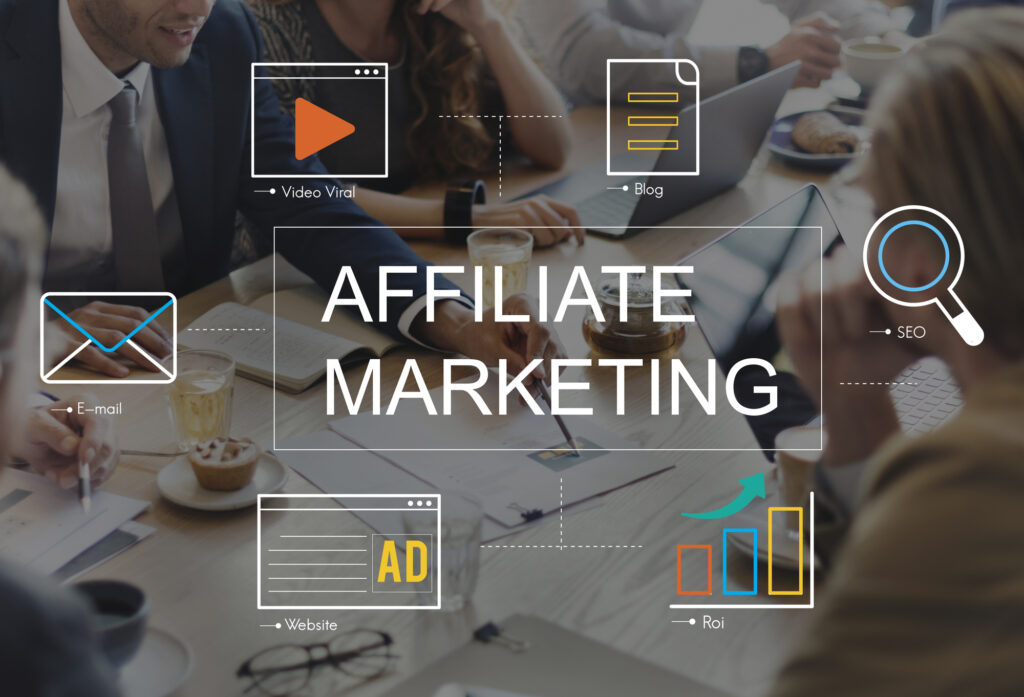
Affiliate marketing is a performance-based digital marketing strategy in which businesses reward affiliates for each customer or visitor they bring through their marketing efforts. This type of digital marketing has become increasingly popular as it allows companies to generate revenue by utilizing the audience of influencers and publishers who promote their products or services on various platforms.
How Affiliate Marketing Works
At its core, affiliate marketing involves three parties:
- The merchant (also known as the advertiser or retailer)
- The affiliate (often referred to as the publisher)
- The customer/visitor
The process begins with the merchant providing unique tracking links to affiliates, allowing them to track sales generated from their promotional activities. Next, the affiliate incorporates these links into their content – whether it’s a website, blog post, social media post, or other channels – encouraging customers to click on them and make purchases on the merchant’s site. Suppose a sale occurs through this referral link. In that case, the affiliate earns a commission based on either a fixed amount or a percentage of the sale.
Benefits of Affiliate Marketing
There are several advantages associated with incorporating affiliate marketing into your digital marketing strategy:
- Cost-effective: Since merchants only pay when results are achieved – such as a lead being generated or a product being sold – it provides efficient use of advertising budgets.
- Targeted reach: Affiliates typically have niche audiences within specific industries or interests, meaning that promotions reach relevant consumers who are more likely to be interested in your offerings.
- Access to diverse audiences: Partnering with multiple affiliates exposes your brand to new consumer groups without significant effort.
- Low-risk entry for businesses: As there is no upfront cost required for merchants (apart from potentially initial setup fees), this type of digital marketing offers a low-risk entry point for businesses looking to expand their online presence and build relationships with influencers.
Key Components of Successful Affiliate Marketing
When introducing Affiliate Marketing, take into account the following components:
- Choose the right affiliates: Work with publishers or influencers who align with your brand’s values and have an audience relevant to your product or service.
- Provide appealing incentive structures: Offer competitive commissions to entice high-quality affiliates to effectively promote your products or services.
- Implement robust tracking systems: Utilizing reliable tracking software helps assess the performance of each affiliate and optimize campaigns accordingly.
- Maintain clear communication channels: Regularly updating affiliates about new products, promotions, and any changes in commission structure fosters a healthy relationship that benefits both parties.
In conclusion, affiliate marketing can be an effective digital marketing type for businesses looking to generate revenue through strategic partnerships without investing heavily in paid advertising efforts. By leveraging the online presence of relevant affiliates, brands can reach targeted audiences while only paying for acquired leads or conversions, making it a cost-effective approach for companies of all sizes.
14. Marketing Automation
Marketing automation uses software and technology to streamline and measure specific marketing tasks and workflows. This type of digital marketing aims to maximize efficiency and effectiveness in executing repetitive or time-consuming tasks, allowing marketers to focus on other essential aspects of their strategy. Businesses can achieve impressive results with minimal manual intervention by leveraging powerful tools like customer relationship management (CRM) systems, email marketing platforms, and social media schedulers.
Types of Marketing Automation Tools
Various tools are available for implementing marketing automation strategies designed to meet multiple business goals and needs. Some popular types include:
- Email Marketing Automation: Platforms such as Mailchimp and Constant Contact allow you to create targeted email campaigns based on user behavior, segmentation rules, or triggers like website visits.
- Social Media Schedulers: Tools like Buffer or Hootsuite let you schedule content across different social channels well in advance while providing analytics reports to track your success simultaneously.
- CRM Systems: Software solutions like Salesforce or HubSpot integrate all aspects of customer interaction by tracking prospects’ progress through the sales funnel – from lead generation to convert into paying customers.
- Landing Page Builders: Companies like Unbounce or Leadpages simplify creating high-converting landing pages and allow easy A/B testing opportunities.
- Analytics and Reporting Tools: Platforms like Google Analytics facilitate data-driven decision-making by providing valuable insights about their target audience’s behavior online.
Benefits of Marketing Automation
Implementing marketing automation offers several advantages that can have a meaningful impact on your business growth:
- Improved Efficiency: Free time for creative or strategic work while automatically performing repetitive tasks.
- Enhanced Customer Engagement: Create personalized experiences based on individual preferences or behaviors rather than one-size-fits-all communication methods.
- Increased Revenue: Boost sales by nurturing leads effectively, improving retention rates, upselling existing customers, and reducing cart abandonment.
- Better Decision Making: Leverage data generated by automation tools to analyze the performance of marketing campaigns and make informed decisions for future improvements.
Key Components of Marketing Automation
For a successful marketing automation strategy, it is essential to include some key components that work together harmoniously:
- Customer Segmentation: Divide your audience into groups based on shared interests, demographics, or behaviors to send relevant communications and offers.
- Trigger-based Campaigns: Rely on event-driven actions or reactions (for example, abandoned shopping carts) as signals to initiate automated campaigns or tailored responses for customer retention.
- Personalization: Craft targeted content using personalization elements like names, preferences, or browsing habits which can help forge a more in-depth connection with your audience.
- Consistent Messaging: Maintain a uniform brand image across all communication channels – from email templates to social media posts – reflecting your company’s values and message effectively.
- Performance Metrics: Monitor essential metrics such as open rates, click-through rates (CTR), conversions, and revenue driven by the campaign for continuous optimization and better results.
By focusing on these essential components while integrating different types of digital marketing strategies and automation tools mentioned earlier, businesses stand poised to reap the benefits of efficient and targeted marketing efforts.
15. Instant Message Marketing
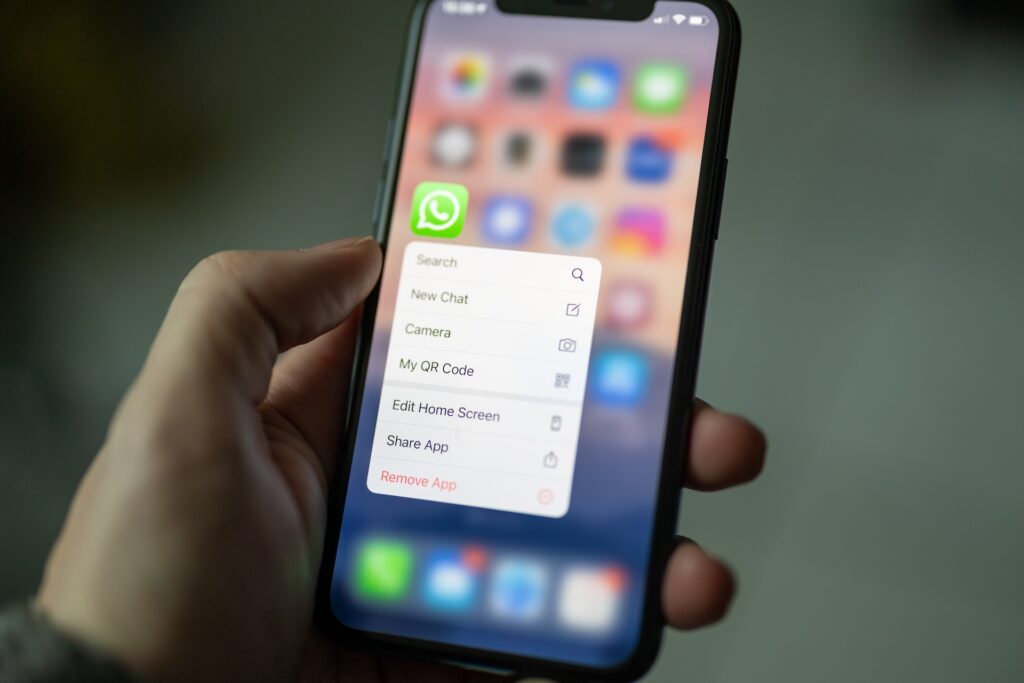
As digital marketing continues to evolve, businesses are tapping into new communication channels, one of which is instant message marketing. This type of digital marketing utilizes real-time messaging platforms to facilitate swift and efficient interaction with potential customers. In this section, let’s uncover the fundamentals of instant message marketing and its significance in digital marketing.
What Is Instant Message Marketing?
Instant message marketing uses popular messaging applications like WhatsApp, Facebook Messenger, Slack, or WeChat to reach target audiences directly. These apps allow companies to send personalized messages or promotions to their customers quickly while providing a more interactive and responsive experience than traditional email marketing.
Benefits of Instant Messenger Marketing
There are several advantages to incorporating instant message marketing in your digital marketing strategy:
- Higher open rates: With instant notifications and less competition from their inbox, users are likelier to read messages sent through messaging apps.
- Faster response times: Real-time conversations enable companies to respond promptly and address customer inquiries or concerns.
- Improved customer engagement: Interactive features such as emojis and multimedia attachments can help create a more engaging customer experience.
- Streamlined customer support: By offering instant access to troubleshooting or assistance via chatbots or human representatives, organizations can significantly enhance their quality of service.
- Building trust: Instant message marketing lets you establish rapport with consumers by maintaining regular contact and addressing specific needs on a personal level.
Key Components of Instant Message Marketing
To execute an effective instant message marketing campaign, keep these essential elements in mind:
- Choosing the right platform: Selecting appropriate messaging apps that cater best to your target audience enables you to connect effectively with the correct set of people.
- Personalization: Tailor each interaction based on individual preferences, interests, or past interactions; make sure content and tone match your brand’s identity.
- Compliance with privacy regulations: Adhering to various privacy laws, such as GDPR or CCPA, is crucial to avoid the risk of being penalized and prevent potential damage to your brand’s reputation.
- Integration with other strategies: Combining instant message marketing with different types of digital marketing methods can amplify the overall impact of your campaigns.
As we explore different forms of digital marketing in this article, it’s essential to remember that crafting a successful digital strategy entails combining various techniques. By incorporating instant message marketing into your toolkit, you provide an up-to-date communication approach that keeps pace with today’s dynamic technology landscape.
